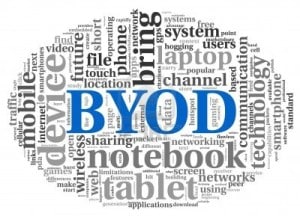
Mobile phones are very personal items. So much so that many employees bring their own mobile phones to their work. People prefer to use their own phones for business to the alternative of carrying two different phones, one for business and one for personal use.
At first glance, BYOD looks like a good deal for businesses. All those phones and tablets that don’t need to be procured. All that saved CAPEX.
But is it really a saving, or is it an illusion?
Figuring out the truth is not so simple, thanks to things like carrier-subsidized devices, contract periods, all-you-can-eat pricing bundles, and carriers’ special pricing for enterprises versus individuals. On top of this is the potential support complexity of supporting (or not supporting) heterogenous device fleets, and the effort of managing security and compliance on non-company devices.
Not only is it a financial labyrinth, but it is also a policy and compliance challenge.
Recently, this puzzle was complicated further by an unlikely party: the California Court of Appeal.

In Cochran v Schwann’s Home Service, the court ruled that the employer must pay the employee’s costs of using his mobile device for business purposes. The key sentence is this one: “Whether the employees have cell phone plans with unlimited minutes or limited minutes, the reimbursement owed is a reasonable percentage of their cell phone bills.”
So even if the employee has an ‘all-you-can-eat’ plan, where the incremental cost of one more phone call is precisely zero, the business must reimburse the employee a ‘reasonable percentage’.
The jurisdiction is only California, the ruling may yet be appealed further, and the ruling makes no mention of data. But there is a strong likelihood that the ruling may survive as a precedent and be generalized into the data area too. In other words, it may be coming soon to a jurisdiction near you.
Suddenly, BYOD just got much more complicated.
For example, how will you measure the level of business use of an employee’s mobile service?
Policies that do not reimburse BYOD employees may not be legal for much longer. Likewise, policies that simply make it the individual employee’s problem to prove the business usage may not be legal for much longer.
How will your company handle the coming compliance workload of BYOD?

There are a few important steps that your business can take immediately to avoid BYOD headaches:
It is worth thinking about local tax implications too. Many jurisdictions have specific taxes on employee benefits, which can include any type of non-salary benefit provided by an employer. To date, few authorities have bothered looking closely at the amount of personal use of mobile devices that is paid for by employers. However, a BYOD employee who is on a company communication service (rather than a private one) is theoretically receiving an employee benefit. Being able to effectively separate and measure business use and personal use is then critical.
BYOD can be a company boon or a company nightmare, depending upon your company’s planning for it and what systems you put in place to manage it. Putting the right systems in place is simple and quick; not putting them in place could be an expensive omission.
As California has shown, regulation is coming and, without the right systems, BYOD could be a nightmare. But with them, it holds the promise of being productivity-enhancing and cost-reducing for your business.
Will you make BYOD a cost-saver or a headache for your business?